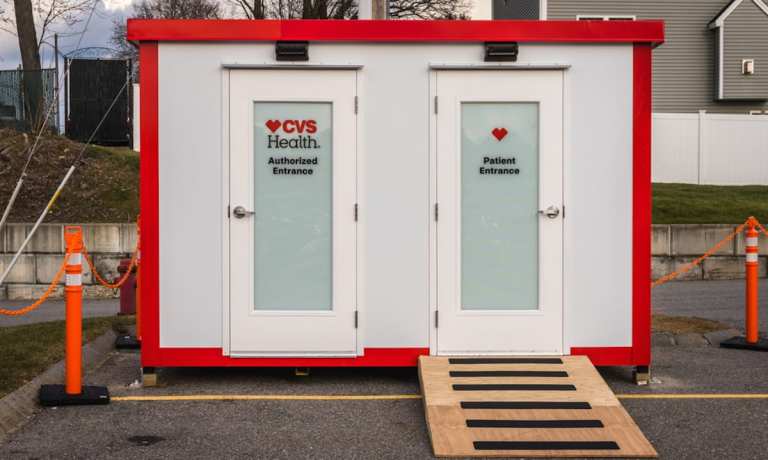
Developing a functional vaccine for a novel virus in under a year was an incredible challenge to overcome. Distributing that vaccine, as it is turning out, may be harder. The rollout of the vaccine has already been slower than expected, with fewer doses distributed to eligible patients than early projections have called for. It’s not just an issue of convenience: PYMNTS research shows it is the key to economic recovery.
And this week, it seems, the delays are continuing to compound — and retailers of all kinds are reporting bumps in their distribution processes. Those who signed up as distribution points, including CVS and Walgreens, have been stuck in the middle. For example, New Jersey Governor Phil Murphy expressed frustrations with both companies last week about their distribution efficiency at nursing homes, a complaint that was immediately refuted by both companies.
“We are escalating vaccinations at assisted living facilities in the state. Walgreens will continue to cooperate with state officials to ensure those eligible are vaccinated in the quickest and safest manner,” Walgreens Senior Director of External Relations Fraser Engerman said on Friday (Jan. 22), per reports. “We are confident we can support the rollout of these vaccines and are working with states almost daily to support their specific needs as they evolve.”
Other problems have shown up, particularly in the last mile of distribution, according to CNBC reports.
“I said from the beginning it will not be a problem of global logistics; it will be a problem of last-mile (delivery) from our warehouses to doctors or whoever, because it is difficult to transport minus 70-degree products,” said Deutsche Post DHL CEO Frank Appel. “And, of course, it is also difficult to scale capacity so rapidly, because nobody knew which vaccine would work.”
Further complicating matters, the distribution of vaccines over the last mile is largely determined and regulated by the state. Regarding public concerns about the slow distribution of vaccines and the state’s inability to get doses, Murphy told the media that the issue resides with the federal government.
“We completely get it, we completely understand the anxiety of so many residents who are waiting to be vaccinated,” Murphy said during a media briefing on Friday (Jan. 22). “But I cannot be any clearer — we built a vaccine infrastructure that can handle this job. We need the doses.”
But other states’ problems have been more logistical in nature. Maryland, according to Brookings Institution data, has been plagued with distribution problems nearly from the start, as most of the oversight and control of administrative and logistical issues connected to the vaccine have been left to its counties. In the unique circumstances of the pandemic, that has served to slow down vaccine delivery.
According to Brookings, patients looking for vaccinations find themselves wandering “a bewildering maze of online sites — some from counties, others from hospitals — that has sprung up.” The net result is that Maryland has distributed 46 percent of doses, well below the national average of 53 percent.
But it’s not all bad news. While some states are struggling and finding themselves below the average vaccine distribution, others are soaring. West Virginia, for example, has distributed 83 percent of its doses thus far, North Dakota is doing even better at 85 percent and New Mexico is over three-quarters at 77 percent.
The trouble with solving for the uneven distribution of vaccines, Brookings noted, is that there is no one easy solution that will solve for all distribution difficulties, because the issues vary and are, in many cases, unique to the localities.
Understanding those issues is key to solving the problem, which in some places continues to worsen as vaccination efforts keep falling behind.
“The efficient distribution of vaccines is key to many other urgent public needs. We need to understand disparities between states and within states. This way, best practices can be shared and problems solved,” the report noted.
The vaccination campaign currently underway is the largest of its kind ever attempted in the United States, and so some bumps are to be expected in the rollout. But whether or not those bumps can be leveled out as vaccine rollout carries on remains to be seen.
As PYMNTS data demonstrates, consumers’ growing willingness to get the vaccine could still end up being critical to the health of the vaccine logistics process. Those most enthusiastic to get the vaccine seem to count themselves among digital shifters, who in many ways will be keen to hold onto their new digital habits well beyond the pandemic period. The data also shows that even those digital adopters would like to get back to some elements of the real world. PYMNTS data found that 29.6 percent of consumers say they want to be able to freely see their family and friends without social distancing or wearing masks, and 18.8 percent of consumers want to be able to engage in leisure activities like going to the movies or attending sporting events and concerts. Third-most cited was the desire to travel freely within the country (15.5 percent), followed by being able to eat in restaurants (11.2 percent).
While it is not quite accurate to say that consumers are looking to get fully back to normal, it is fair to say there are plenty of activities they would like to resume, and they’re counting on vaccines to help make that happen. Whether that will speed up the process remains to be seen.